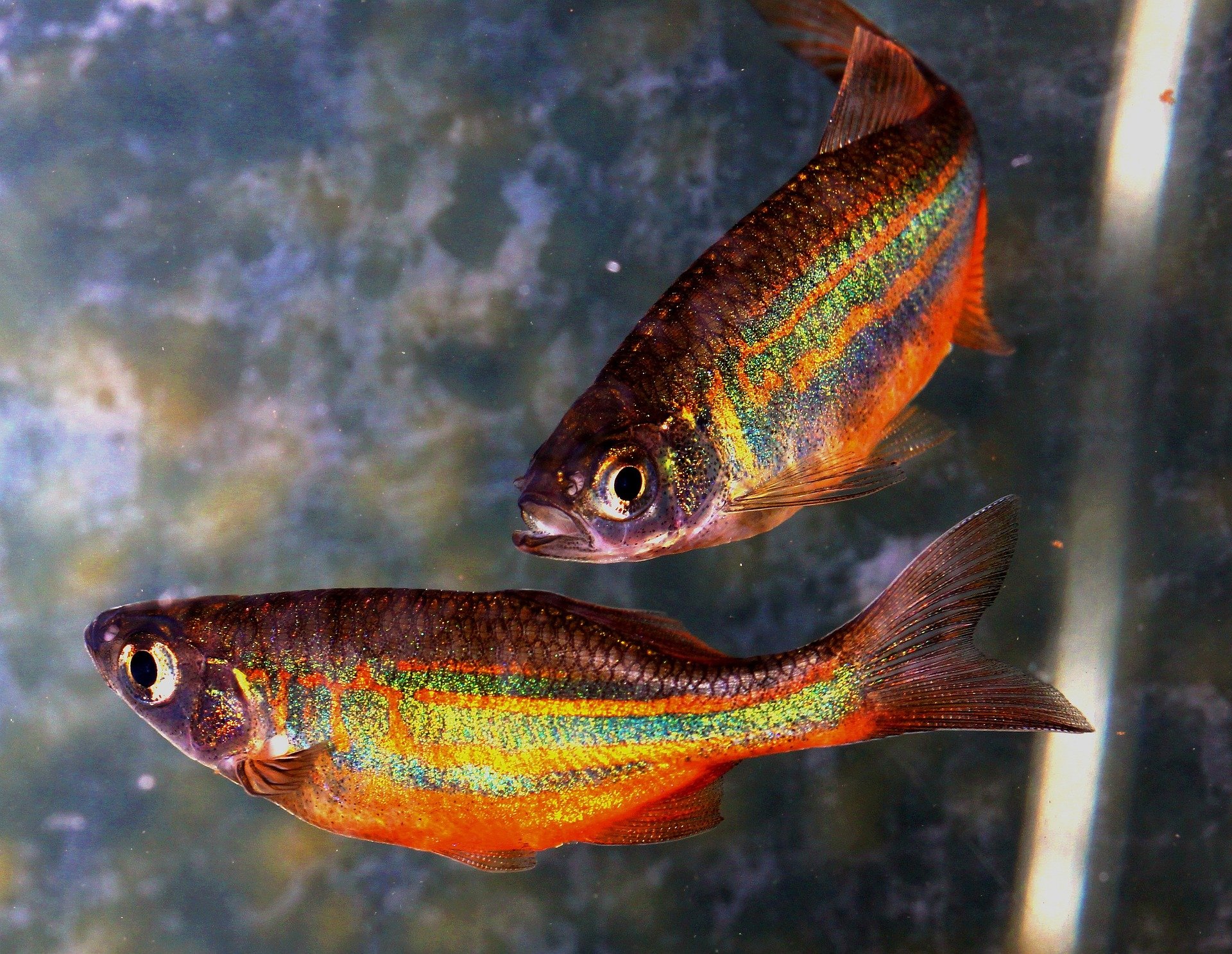
PROJECTS & PUBLICATIONS
Floragenex proudly assists scientists from around the world advance their research. Our projects cover a wide range of applications, including disease diagnosis, crop improvement, population monitoring and many others.
FEATURED PUBLICATIONS
Below are a few featured publications that showcase the types of projects we have worked on. A more cohesive list of publications can be found below.
Avoidance of PCR duplicates
On the causes, consequences, and avoidance of PCR duplicates: Towards a theory of library complexity
Authors delve into the causes, consequences, and strategies to avoid PCR duplicates in DNA sequencing libraries, advancing our understanding of library complexity and methods for better data reproducibility. Their findings have profound implications for researchers working with RAD-Seq and other genomic techniques, offering insights into the intricacies of library preparation and the potential biases introduced by PCR duplicates.
Miscanthus sinensis
Genome-wide association studies and prediction of 17 traits related to phenology, biomass and cell wall composition in the energy grass Miscanthus sinensis
Scientists at Aberystwyth University used RAD sequencing for a genome wide association study (GWAS) in the bioenergy feedstock Miscanthus. The goal in GWAS is to identify a set of genetic variants that tend to be associated with specific traits that are observed in natural, unstructured populations. RAD-Seq was able to identify over 100,000 single nucleotide variants (SNVs) across 138 Miscanthus plants. The large number of markers is advantageous in these types of studies, where understanding the organization of the genome at high resolution is key.
Danio and Neurospora
Rapid SNP discovery and genetic mapping using sequenced RAD markers
The pioneering paper describing the methods and protocols developed for Restriction-site Associated DNA Sequencing (RAD-Seq). As a proof of concept study, two populations of Danio rerio and Neurospora crassa were sequenced using the RAD method in conjunction with Illumina next generation DNA sequencing technology. Over 13,000 novel Single Nucleotide Polymorphisms (SNPs) were identified across both organisms. RAD-Seq also successfully identified several genetic loci known to regulate traits in both Danio and Neurospora, further demonstrating the applicability of the RAD platform for accurate genetic mapping.
Helianthus
A high-density SNP Map of sunflower derived from RAD-sequencing facilitating fine-mapping of the rust resistance gene R12
Researchers describe the development of a high-density single nucleotide polymorphism (SNP) map of sunflower, a crop plant that is important for its oil and seed production. The authors used restriction-site associated DNA sequencing (RAD-seq) to identify SNP markers in sunflower and generated a genetic map with over 10,000 SNP markers. They then used this map to fine-map the rust resistance gene R12, which confers resistance to a devastating disease of sunflower. The study demonstrates the utility of RAD-seq and SNP genotyping for constructing high-resolution genetic maps of complex genomes, which can facilitate the identification of genes underlying important traits in crops.
Catharus ustulatus
A role for migration-linked genes and genomic islands in divergence of a songbird
Researchers found that migration-linked genes and genomic islands played a crucial role in driving population divergence. These genomic regions were found to be associated with traits such as migration timing, plumage coloration, and song. The study highlights the importance of considering migration-linked genes and genomic islands when investigating the genetic basis of population divergence in songbirds.
Solanum melongena
Identification of SNP and SSR markers in eggplant using RAD tag sequencing
Barchi L describes the use of restriction site-associated DNA sequencing (RAD-seq) to identify single nucleotide polymorphism (SNP) and simple sequence repeat (SSR) markers in eggplant. Researchers used RAD-seq to sequence DNA from 96 eggplant accessions, resulting in the identification of 27,521 SNPs and 3,828 SSRs. These markers were used to assess the genetic diversity and population structure of the accessions, revealing significant diversity within the collection. The results of this study provide valuable resources for eggplant breeding and genetics research.
Arabidopsis and Lactuca
Sequence-Based Genotyping for Marker Discovery and Co-Dominant Scoring in Germplasm and Populations
Researchers at KeyGene, N.V. describe the application of Sequence Based Genotyping (SBG) in Arabidopsis and Lactuca (lettuce). In concert with the Illumina Genome Analyzer and HiSeq 2000 platforms, SBG was able to identify over 1,000 high quality genetic markers in each species, which were then used to assemble genetic linkage maps. The overall marker quality and dynamic range of marker density achievable with SBG is a valuable feature for assessing population structure or molecular assisted breeding applications.

ACCELERATE YOUR RESEARCH
Scientific Publications
Genomic atolls of differentiation in coral reef fishes (Hypoplectrus spp., Serranidae).
Puebla O, Bermingham E, McMillan WO.
Mol Ecol.
2014 Nov;23(21):5291-303. doi: 10.1111/mec.12926. Epub 2014 Oct 4.
Genotyping-by-sequencing as a tool to infer phylogeny and ancestral hybridization: A case study in Carex (Cyperaceae).
Escudero M, Eaton DA, Hahn M, Hipp AL.
Mol Phylogenet Evol.
2014 Oct;79:359-67. doi: 10.1016/j.ympev.2014.06.026. Epub 2014 Jul 8.
Design of a 9K illumina BeadChip for polar bears (Ursus maritimus) from RAD and transcriptome sequencing.
Malenfant RM, Coltman DW, Davis CS.
Mol Ecol Resour.
2014 Sep 3. doi: 10.1111/1755-0998.12327. [Epub ahead of print]
Revisiting comparisons of genetic diversity in stable and declining species: assessing genome-wide polymorphism in North American bumble bees using RAD sequencing.
Lozier JD
Mol Ecol.
2014 Feb;23(4):788-801. doi: 10.1111/mec.12636.
Restriction site-associated DNA sequencing generates high-quality single nucleotide polymorphisms for assessing hybridization between bighead and silver carp in the United States and China.
Lamer JT, Sass GG, Boone JQ, Arbieva ZH, Green SJ, Epifanio JM.
Mol Ecol Resour.
2014 Jan;14(1):79-86. doi: 10.1111/1755-0998.12152. Epub 2013 Aug 20.
A framework phylogeny of the American oak clade based on sequenced RAD data.
Hipp AL, Eaton DA, Cavender-Bares J, Fitzek E, Nipper R, Manos PS.
PLoS One.
2014 Nov;23(21):5291-303. doi: 10.1111/mec.12926. Epub 2014 Oct 4.
The population genomics of repeated evolution in the blind cavefish Astyanax mexicanus.
Bradic M, Teotonio H, Borowsky RL.
Mol Biol Evol.
2013 Nov;30(11):2383-400. doi: 10.1093/molbev/mst136. Epub 2013 Aug 8.
The genetic architecture of reproductive isolation during speciation-with-gene-flow in lake whitefish species pairs assessed by RAD sequencing.
Gagnaire PA, Pavey SA, Normandeau E, Bernatchez L.
Evolution.
2013 Sep;67(9):2483-97. doi: 10.1111/evo.12075. Epub 2013 Mar 9.
Inferring phylogeny and introgression using RADseq data: an example from flowering plants (Pedicularis: Orobanchaceae).
Eaton DA, Ree RH.
Syst Biol.
2013 Sep;62(5):689-706. doi: 10.1093/sysbio/syt032. Epub 2013 May 7.
Mapping phenotypic, expression and transmission ratio distortion QTL using RAD markers in the Lake Whitefish (Coregonus clupeaformis).
Gagnaire PA, Normandeau E, Pavey SA, Bernatchez L.
Mol Ecol.
2013 Jun;22(11):3036-48. doi: 10.1111/mec.12127. Epub 2012 Nov 26.
Genotyping by RAD sequencing enables mapping of fatty acid composition traits in perennial ryegrass (Lolium perenne (L.)).
Hegarty M, Yadav R, Lee M, Armstead I, Sanderson R, Scollan N, Powell W, Skot L.
Plant Biotechnol J.
2013 Jun;11(5):572-81. doi: 10.1111/pbi.12045. Epub 2013 Jan 18.







